Search
- Page Path
-
- HOME
- Search
- Editorial
- Neonatology (Perinatology)
- Barriers to and enablers of kangaroo mother care
- Soon Min Lee
- Clin Exp Pediatr. 2020;63(11):431-432. Published online October 10, 2019
-
- Review Article
- Neurology
- How can neurological outcomes be predicted in comatose pediatric patients after out-of-hospital cardiac arrest?
- Hyo Jeong Kim
- Clin Exp Pediatr. 2020;63(5):164-170. Published online October 10, 2019
-

The prognosis of patients who are comatose after resuscitation remains uncertain. The accurate prediction of neurological outcome is important for management decisions and counseling. A neurological examination is an important factor for prognostication, but widely used sedatives alter the neurological examination and delay the response recovery. Additional studies including electroencephalography, somatosensory-evoked potentials, brain imaging, and blood biomarkers are useful for...
- Systematic review and meta-analysis
- Neurobehavior
- Evaluation of drug interventions for the treatment of sleep disorders in children with autism spectrum disorders: a systematic review
- Ensiyeh Jenabi, Sara Ataei, Saeid Bashirian
- Clin Exp Pediatr. 2019;62(11):405-409. Published online October 2, 2019
-
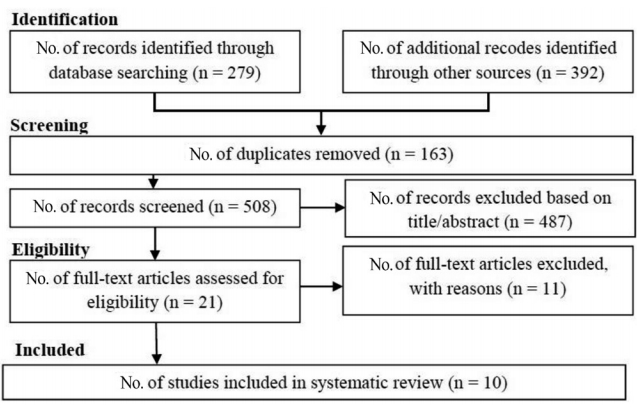
A structured review study of drug interventions on sleep disorders in patients with autism spectrum disorders (ASD) has not been published to date. This systematic review aimed to investigate drug interventions for the treatment of sleep disorders in children with ASD. The Web of Science, PubMed, and Scopus databases were searched until March 2019. Study quality was assessed using the...
- Editorial
- Gastroenterology
- Can proton pump inhibitors cause intestinal inflammation in children?
- Ben Kang
- Clin Exp Pediatr. 2019;62(10):384-385. Published online October 2, 2019
-
- Original Article
- Gastroenterology
- Thyroid disturbances in children treated with combined pegylated interferon-alpha and ribavirin for chronic hepatitis C
- Yasser K. Rashed, Fatma A. Khalaf, Sobhy E. Kotb
- Clin Exp Pediatr. 2020;63(2):52-55. Published online September 27, 2019
-

Background: Immunomodulatory properties of interferon (IFN) have been documented. It may induce autoimmune diseases such as autoimmune thyroiditis with hypo- or hyperthyroidism. In addition, it may impair thyroid hormone synthesis through affecting iodide organification in thyroid gland.
Purpose: The aim of this study was to describe thyroid function tests disturbances in children with chronic hepatitis C (CHC) receiving pegylated interferon-alpha (PEG...
- Neonatology (Perinatology)
- Long-term cognitive, executive, and behavioral outcomes of moderate and late preterm at school age
- Ju Hyun Jin, Shin Won Yoon, Jungeun Song, Seong Woo Kim, Hee Jung Chung
- Clin Exp Pediatr. 2020;63(6):219-225. Published online September 25, 2019
-
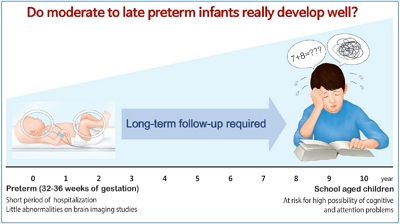
Question: Infants born at moderate to late preterm gestations are known to have little problem later on, but is that really true?
Finding: At school age, cognitive problem was observed in about a quarter of the children. In addition, more than half of the children was suspected of having attention problems.
Meaning: Moderate to late preterm infants are at risk of developing abnormal intelligence and attention problems at early school age, therefore they should not be neglected on longterm follow-up evaluation.
- Review Article
- Nephrology (Genitourinary)
- Treatment of refractory IgA vasculitis with dapsone: a systematic review
- Keum Hwa Lee, Sung Hwi Hong, Jinhae Jun, Youngheun Jo, Woogyeong Jo, Dayeon Choi, Jeongho Joo, Guhyun Jung, Sunghee Ahn, Andreas Kronbichler, Michael Eisenhut, Jae Il Shin
- Clin Exp Pediatr. 2020;63(5):158-163. Published online September 24, 2019
-
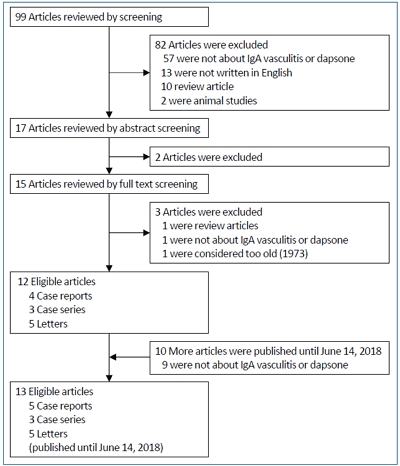
IgA vasculitis, formerly known as Henoch-Schönlein purpura, is a systemic IgA-mediated vasculitis of the small vessels commonly seen in children. The natural history of IgA vasculitis is generally self-limiting; however, one-third of patients experience symptom recurrence and a refractory course. This systematic review examined the use of dapsone in refractory IgA vasculitis cases. A literature search of PubMed databases retrieved...
- Editorial
- Neonatology (Perinatology)
- Epidermal growth factor as a reliable marker of necrotizing enterocolitis in preterm neonates
- Na Mi Lee
- Clin Exp Pediatr. 2020;63(4):133-134. Published online September 18, 2019
-
- Clinical note
- Neonatology (Perinatology)
- Gray-brown skin discoloration following phototherapy for hyperbilirubinemia due to anti-E alloimmunization
- Da Jeong Lee, Woo Sun Song, Seung Yeon Kim
- Clin Exp Pediatr. 2019;62(11):428-430. Published online September 18, 2019
-

- Editorial
- Neonatology (Perinatology)
- Strategies to improve outcomes of bronchopulmonary dysplasia
- Young Hwa Jung, Chang Won Choi, Beyong Il Kim
- Clin Exp Pediatr. 2019;62(10):380-381. Published online September 11, 2019
-
- Original Article
- Nephrology (Genitourinary)
- Clinical manifestations of BK virus infection in pediatric kidney transplant patients
- Yiyoung Kwon, Jeong Yeon Kim, Yeonhee Lee, Heeyeon Cho
- Clin Exp Pediatr. 2019;62(11):422-427. Published online September 5, 2019
-

Background: Polyomavirus BK (BKV) infection is an important cause of graft loss in kidney transplant patients.
Purpose: The purpose of this study was to evaluate clinical findings and risk factors for BKV in pediatric patients after kidney transplantation. Methods: This retrospective single-center study included 31 pediatric kidney transplant recipients from January 2002 to December 2017. Two patients received 2 transplantations during the...
- Critical Care Medicine
- Assessment of interhospital transport care for pediatric patients
- Krittiya Chaichotjinda, Marut Chantra, Uthen Pandee
- Clin Exp Pediatr. 2020;63(5):184-188. Published online August 29, 2019
-

Background: Many critically ill patients require transfer to a higher-level hospital for complex medical care. Despite the publication of the American Academy of Pediatrics guidelines for pediatric interhospital transportation services and the establishment of many pediatric transport programs, adverse events during pediatric transport still occur.
Purpose: To determine the incidence of adverse events occurring during pediatric transport and explore their complications...
- Neonatology (Perinatology)
- Placental histopathology in late preterm infants: clinical implications
- Kristina Ericksen, Joshua Fogel, Rita P. Verma
- Clin Exp Pediatr. 2020;63(2):48-51. Published online August 19, 2019
-

Question: Placental histopathology and its clinical implications in late preterm infants.
Finding: Placental vascular anomalies are more, and placental inflammation less common in late preterm infants compared to term. Higher maternal age, magnesium sulfate therapy and hypertension are clinical risk factors associated with late preterm delivery.
Meaning: Prevention and aggressive management of hypertension, and conception before 30 years of age might be effective in preventing late preterm births.
- Review Article
- Neurology
- Autoimmune encephalitis and epilepsy: evolving definition and clinical spectrum
- Joo Hee Seo, Yun-Jin Lee, Ki Hyeong Lee, Elakkat Gireesh, Holly Skinner, Michael Westerveld
- Clin Exp Pediatr. 2020;63(8):291-300. Published online August 16, 2019
-
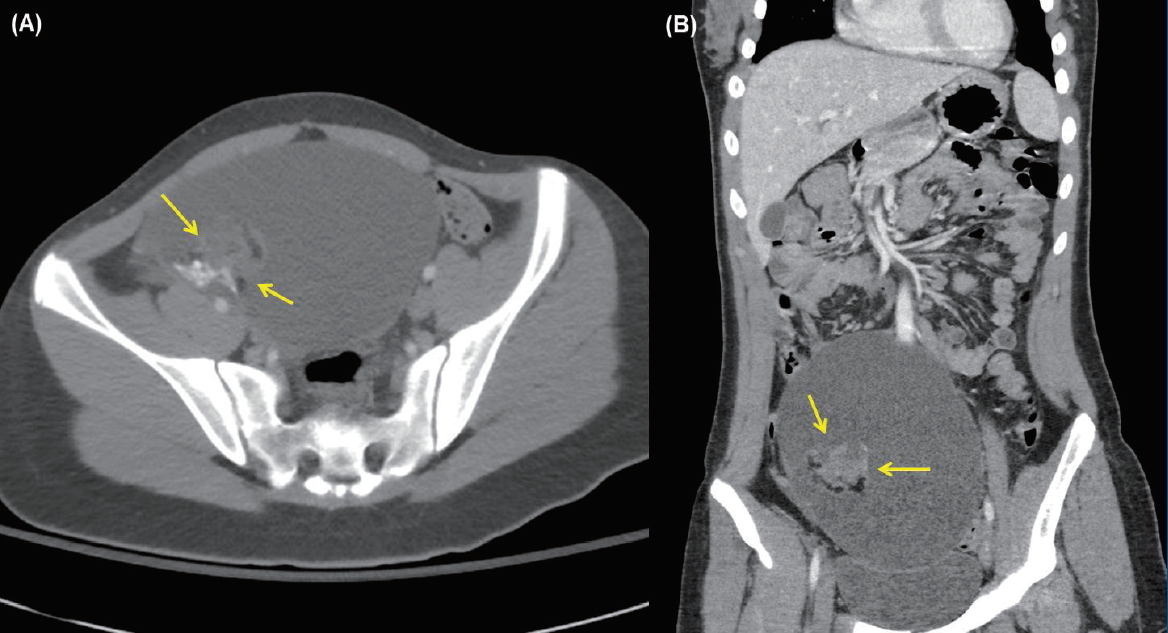
Advances in autoimmune encephalitis studies in the past 10 years have led to the identification of new syndromes and biomarkers that have transformed the diagnostic approach to the disorder. The disorder or syndrome has been linked to a wide variety of pathologic processes associated with the neuron-specific autoantibodies targeting intracellular and plasma membrane antigens. However, current criteria for autoimmune encephalitis...
- Original Article
- Neonatology (Perinatology)
- Effectiveness of various nonpharmacological analgesic methods in newborns
- Pancham Kumar, Rakesh Sharma, Sukhdev Rathour, Sunidhi Karol, Mohit Karol
- Clin Exp Pediatr. 2020;63(1):25-29. Published online August 16, 2019
-
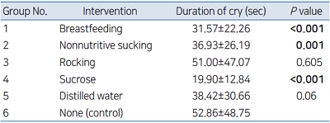
Question: Can nonpharmacological methods be used for neonatal pain management.
Finding: Nonpharmacological methods like Sucrose, breastfeeding etc have shown to significantly reduce the pain caused by intramuscular hepatitis B vaccination.
Meaning: Nonpharmacological methods are the safe and cheap potential modalities of analgesia which can be used during mild to moderate pain in newborns.
- Editorial
- Neonatology (Perinatology)
- Practical considerations when administering surfactants to preterm infants with respiratory distress syndrome
- Heui Seung Jo
- Clin Exp Pediatr. 2019;62(12):440-441. Published online August 16, 2019
-
- Original Article
- Critical Care Medicine
- Comparative validity of microalbuminuria versus clinical mortality scores to predict pediatric intensive care unit outcomes
- Shifa Nismath, Suchetha S. Rao, B.S. Baliga, Vaman Kulkarni, Gayatri M. Rao
- Clin Exp Pediatr. 2020;63(1):20-24. Published online August 12, 2019
-

Question: Does microalbuminuria predict mortality in pediatric intensive care unit?
Finding: Positive correlation was found between albumin-creatinine ratio and pediatric intensive care unit stay, organ dysfunction and need of inotropes. Area under the receiver operating characteristic curve for albumin-creatinine ratio was comparable to mortality scores.
Meaning: Microalbuminuria is a good predictor of outcome in pediatric intensive care unit and is comparable with mortality scores.
- Gastroenterology
- Association between Body Mass Index and Hepatitis B antibody seropositivity in children
- Yoowon Kwon, Su Jin Jeong
- Clin Exp Pediatr. 2019;62(11):416-421. Published online August 12, 2019
-
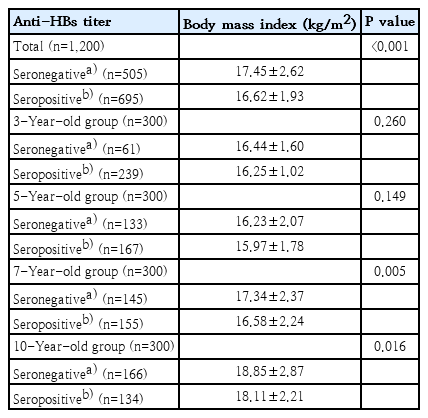
Background: The seropositivity rate of hepatitis B surface antigen (anti-HBs) antibodies is known to be ≥95% after hepatitis B virus vaccination during infancy. However, a low level or absence of anti-HBs in healthy children is discovered in many cases. Recent studies in adults reported that a reduced anti-HBs production rate is related to obesity.
Purpose: To investigate whether body mass index...
- Editorial
- Cardiology
- Can the accurate epidemiological study help to search the etiology of Kawasaki disease?
- Ji Whan Han
- Clin Exp Pediatr. 2020;63(3):96-97. Published online August 7, 2019
-
- Genetics and Metabolism
- Considerations for evaluating the effectiveness and long-term outcome of enzyme replacement therapy in Pompe disease
- Chong Kun Cheon
- Clin Exp Pediatr. 2020;63(1):14-15. Published online August 7, 2019
-
- Neonatology (Perinatology)
- Central line-associated bloodstream infections in the neonatal intensive care unit
- Woo Ryoung Lee
- Clin Exp Pediatr. 2019;62(10):382-383. Published online July 17, 2019
-
- Review Article
- Recommended immunization schedule for children and adolescents: Committee on Infectious Diseases of the Korean Pediatric Society, 2018
- Eun Hwa Choi, Su Eun Park, Yae-Jean Kim, Dae Sun Jo, Yun-Kyung Kim, Byung-Wook Eun, Taek-Jin Lee, Jina Lee, Hyunju Lee, Ki Hwan Kim, Hye-Kyung Cho, Eun Young Cho, Jong-Hyun Kim
- Clin Exp Pediatr. 2019;62(7):252-256. Published online July 15, 2019
-

The Committee on Infectious Diseases of the Korean Pediatric Society recommended immunization schedule for children and adolescents aged 18 years or younger in the 9th (2018) edition of Immunization guideline. This report provides the revised recommendations made by the committee and summarizes several changes from the 2015 guideline. National immunization program (NIP) launched a human papillomavirus (HPV) immunization for girls...
- Editorial
- Neonatology (Perinatology)
- Eosinophil count and neutrophil-to-lymphocyte count ratio as biomarkers for predicting early-onset neonatal sepsis
- Jang Hoon Lee
- Clin Exp Pediatr. 2019;62(12):438-439. Published online July 9, 2019
-
- Endocrinology
- Correlation between genetic heterogeneity and variability for response to growth hormone in Noonan syndrome
- Young-Lim Shin
- Clin Exp Pediatr. 2019;62(11):412-413. Published online July 9, 2019
-
- Allergy
- Is determining nasal eosinophil count and nasal eosinophil peroxidase concentration clinically useful in children with rhinits?
- Bong Seok Choi
- Clin Exp Pediatr. 2019;62(9):342-343. Published online July 9, 2019
-
- Review Article
- Cardiology
- Reality of Kawasaki disease epidemiology
- Gi Beom Kim
- Clin Exp Pediatr. 2019;62(8):292-296. Published online July 9, 2019
-
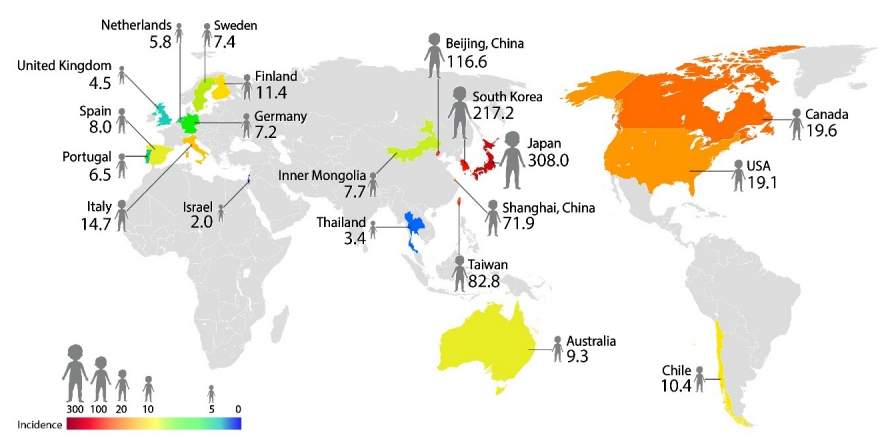
Epidemiologic studies of Kawasaki disease (KD) have shown a new pattern or change of its occurrence suggestive of its pathophysiology or risk factors from the first patient with KD reported in 1961. The incidence of KD in Northeast Asian countries including Japan, South Korea, China, and Taiwan is 10–30 times higher than that in the United States and Europe. Knowing...
- Original Article
- Gastroenterology
- Influence of proton pump inhibitor therapy on intestinal inflammation assessed by fecal calprotectin in pediatric patients
- Su Yeong Kim, Na Mi Lee, Sin Weon Yun, Soo Ahn Chae, In Seok Lim, Eung Sang Choi, Dae Yong Yi
- Clin Exp Pediatr. 2019;62(10):400-404. Published online July 3, 2019
-
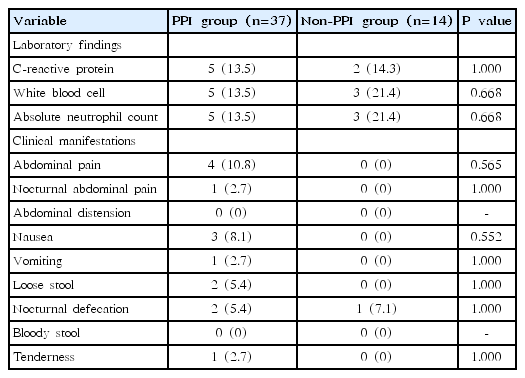
Background: An increase in the numbers of patients with gastrointestinal symptoms has recently been observed.
Purpose: To investigate the effects of proton pump inhibitor (PPI) therapy on intestinal inflammation in children and adolescents as confirmed by clinical manifestations and objectively assessed by fecal calprotectin (FC) level measurement. Methods: Consecutive children (aged 3–18 years) who presented with gastrointestinal symptoms and were treated with...
- Endoscopic postdilatation application of Mitomycin C in children with resistant esophageal strictures
- Yasser K. Rashed, Mohamed El-Guindi
- Clin Exp Pediatr. 2019;62(10):395-399. Published online June 24, 2019
-
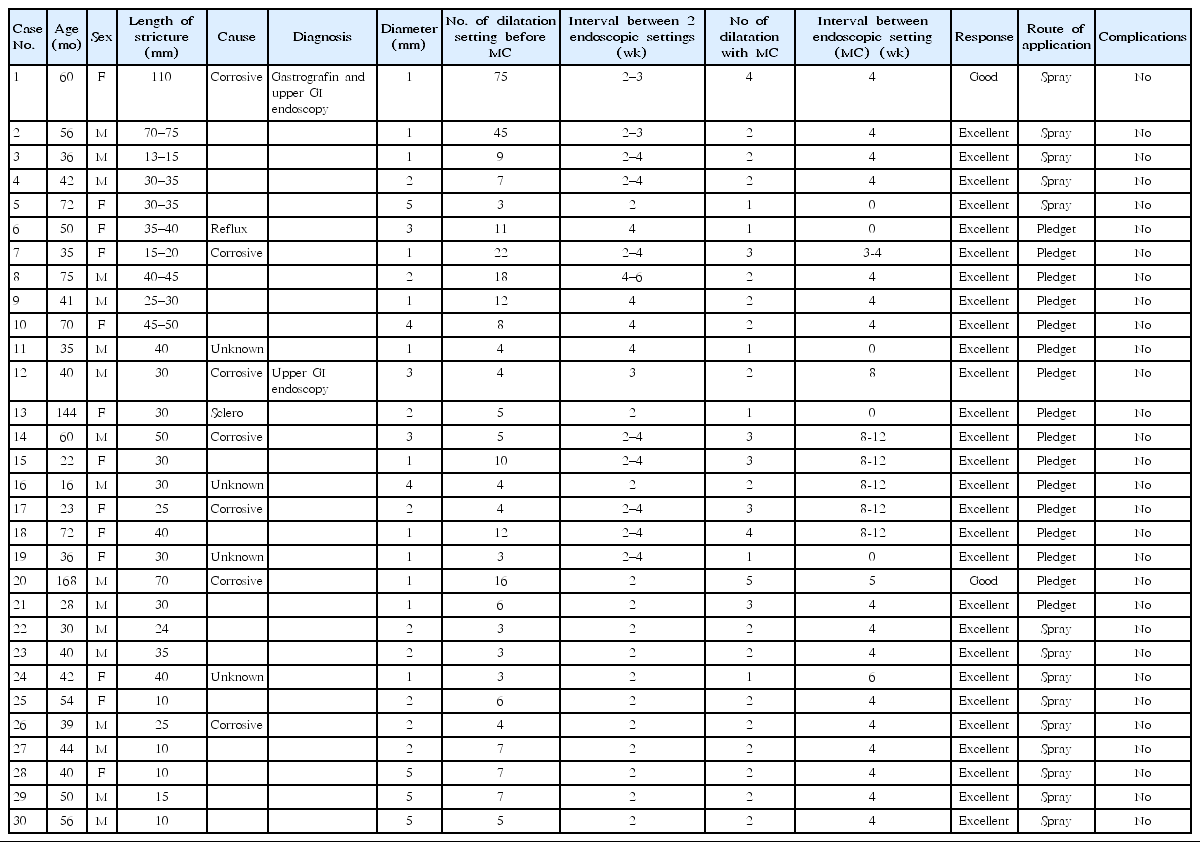
Background: The esophagus is the most common part of gastrointestinal (GI) tract at the risk of stricture. Benign disorders are the leading causes of narrowing. Caustic ingestion is the most common cause of esophageal stricture in children, especially in developing countries. Clinical responses to the topical application of Mitomycin C in various medical procedures have been reported.
Purpose: The study aimed...
- General Pediatrics
- Prevalence of hyperuricemia and its association with metabolic syndrome and cardiometabolic risk factors in Korean children and adolescents: analysis based on the 2016–2017 Korea National Health and Nutrition Examination Survey
- Jung Hyun Lee
- Clin Exp Pediatr. 2019;62(8):317-323. Published online June 24, 2019
-
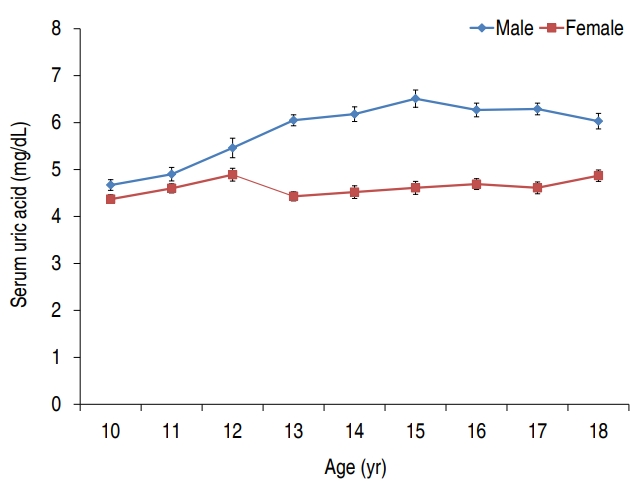
Purpose: Investigating the prevalence of hyperuricemia and its association with metabolic syndrome (MetS) and cardiometabolic risk factors (CMRFs) in Korean children and adolescents. Methods: This cross-sectional survey used data from the 7th Korea National Health and Nutrition Examination Survey (2016–2017); 1,256 males and females aged 10–18 years were included. Hyperuricemia was defined as serum uric acid levels were >6.6 mg/dL at...
- Editorial
- Allergy
- Why should we monitor for hematologic adverse drug reactions to oxcarbazepine?
- Gwang Cheon Jang
- Clin Exp Pediatr. 2019;62(8):299-300. Published online June 24, 2019
-
-

-
-
8.02023CiteScore94th percentilePowered by
-
Impact Factor3.2
-
- TOPICS
- ARTICLE CATEGORY
- Editorial Office
-
Korean Pediatric Society
#1606 Seocho World Officetel, 19 Seoun-ro, Seocho-ku, Seoul 06732, Korea
Tel: +82-2-3473-7306 Fax: +82-2-3473-7307 E-mail: office@e-cep.org
Clinical and Experimental Pediatrics is an open access journal. All articles are distributed under the terms of the Creative Commons Attribution NonCommercial License (http://creativecommons.org/licenses/by-nc/4.0/)
Copyright © 2025 by Korean Pediatric Society.











